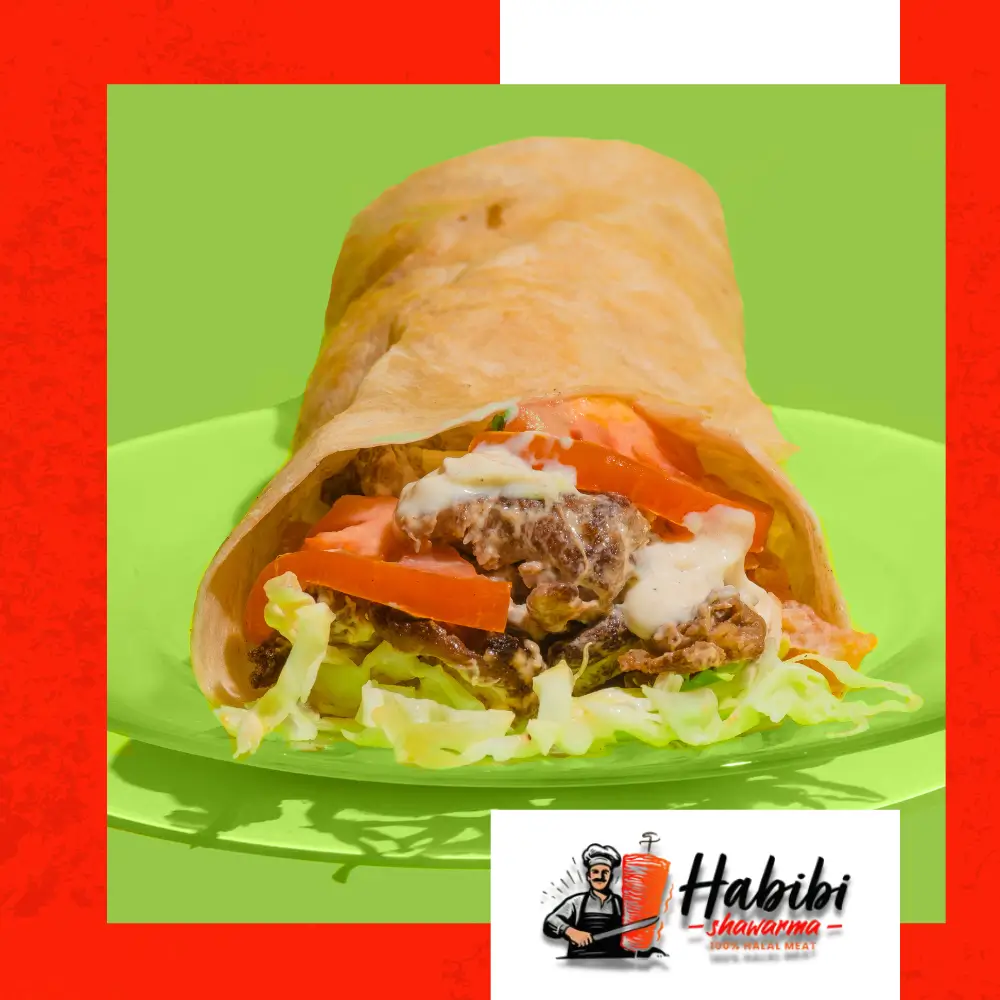If you’ve ever typed “shawarma near me” into your search bar, you know just how many styles and flavors of shawarma exist today. One key ingredient that sets Mediterranean shawarma apart from its Middle Eastern counterpart is olive oil. While both cuisines share cultural roots and techniques, their use of olive oil—how, when, and why—can change the flavor, health profile, and even texture of your favorite shawarma wrap or bowl.
What Is Shawarma?
Shawarma is a popular dish made by stacking marinated meat (chicken, beef, lamb, or turkey) on a vertical spit, slow-roasting it, and slicing it thin for wraps or platters. Originating in the Levant region, shawarma has become a global street food icon known for its spiced marinade, crispy edges, and savory sauces.
The Role of Olive Oil in Mediterranean Shawarma
Mediterranean shawarma is known for its light, herbaceous flavor, and olive oil plays a starring role in both the marinade and cooking process. This staple of the Mediterranean diet isn’t just used for flavor—it enhances texture and nutritional value.
How Olive Oil Is Used:
- Marinades: Olive oil is mixed with fresh herbs (oregano, rosemary), lemon juice, and garlic to tenderize the meat and infuse it with flavor.
- Grilling or Searing: Brushing olive oil on the surface of the meat keeps it moist during high-heat cooking methods like grilling or pan-searing.
- Dressings and Sauces: Olive oil is also a base for Mediterranean garlic sauces, vinaigrettes, and tahini blends used in shawarma bowls.
The result is a lighter, more citrus-forward shawarma that emphasizes freshness and heart-healthy fats. Many people searching for “healthy shawarma near me” are often directed to Mediterranean-style options for this very reason.
Traditional Middle Eastern Shawarma: Less Oil, More Spice
While olive oil is used in traditional Middle Eastern cooking, it plays a more secondary role in classic shawarma recipes. Instead, the focus is on intense spice blends and tangy marinades that typically include vinegar or yogurt as the main tenderizers.
Common Middle Eastern Shawarma Marinade Ingredients:
- Yogurt or Vinegar: Used as the acidic base to break down meat fibers.
- Spices: Allspice, cumin, paprika, cinnamon, cardamom, cloves.
- Garlic: Used generously, especially in the famous Lebanese toum sauce.
In this approach, olive oil might be used sparingly—just enough to blend the spices or lightly coat the meat. The final flavor is bold, smoky, and deeply savory, with less emphasis on oil or herbs.
Health Differences Between the Two Styles
Olive oil is rich in monounsaturated fats and antioxidants, making it a cornerstone of the Mediterranean diet. When used generously in Mediterranean shawarma, it contributes to:
- Improved heart health
- Lower inflammation
- Better digestion and nutrient absorption
Meanwhile, Middle Eastern shawarma—when cooked traditionally with less added oil—can be lower in fat but may rely more on salt and spices for flavor. Both styles can be healthy depending on how they’re prepared, but Mediterranean shawarma is often marketed as the more heart-smart choice.
Flavor Profile Comparison
| Feature | Mediterranean Shawarma | Middle Eastern Shawarma |
|---|---|---|
| Main Oil | Extra virgin olive oil | Minimal or neutral oil (occasionally olive oil) |
| Marinade Base | Olive oil, lemon juice, herbs | Yogurt, vinegar, bold spices |
| Flavor Profile | Fresh, zesty, herbaceous | Smoky, garlicky, heavily spiced |
| Health Focus | Heart-healthy fats, antioxidants | Low-fat, high-flavor, protein-rich |
Which Shawarma Should You Choose?
If you’re looking for something fresh, light, and rich in olive oil, opt for a Mediterranean-style shawarma. Many modern cafes and health food restaurants highlight this version on their menus. If you’re in the mood for something bold, garlicky, and deeply traditional, go for Middle Eastern shawarma found in halal spots and authentic Levantine eateries.
Pro tip: When browsing local options, use phrases like “Mediterranean shawarma near me” or “halal shawarma near me” to refine your search based on taste and style.
Final Thoughts
Shawarma continues to evolve, blending culinary traditions across regions. The difference in how Mediterranean and Middle Eastern shawarma use olive oil may seem subtle—but it greatly impacts flavor, nutrition, and overall experience. Whether you’re indulging in a garlicky beef wrap or savoring a lemony chicken bowl, one thing is clear: there’s a shawarma style for every palate.
So the next time you’re hungry and searching “shawarma near me”, remember—your perfect wrap might just depend on how it’s marinated and whether olive oil takes center stage.
READ MORE:
Comparing the Spice Profiles of Mediterranean and Middle Eastern Shawarma

